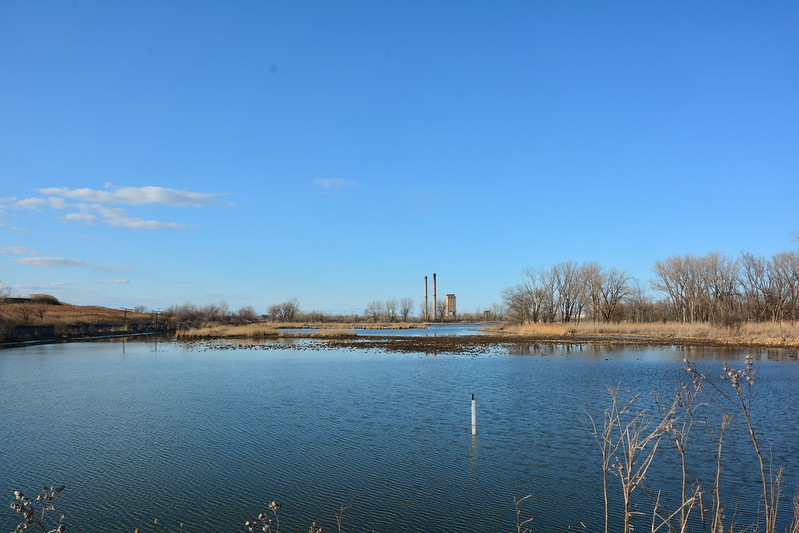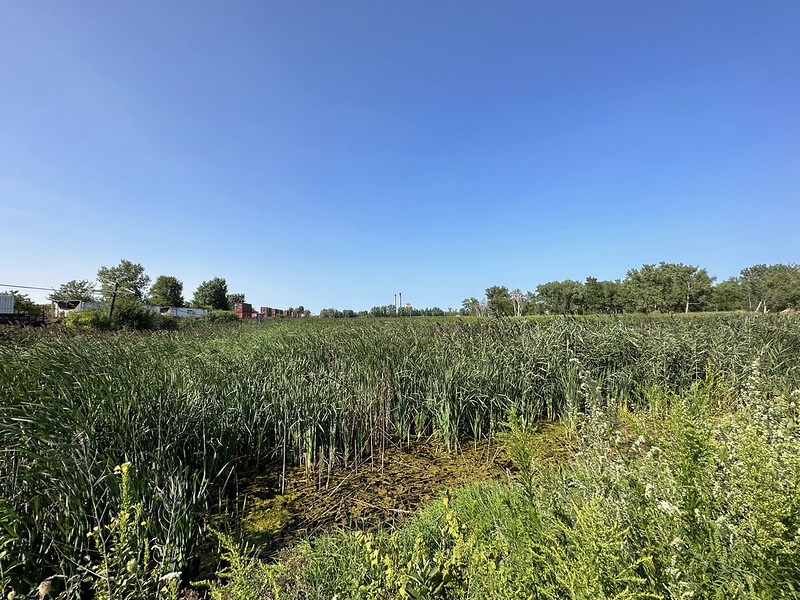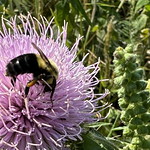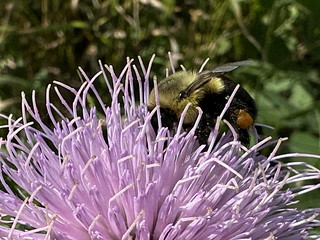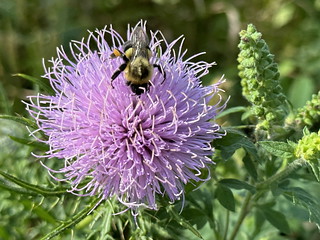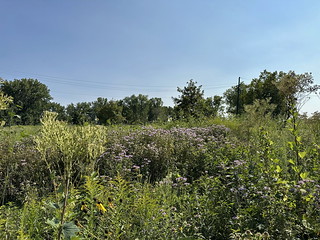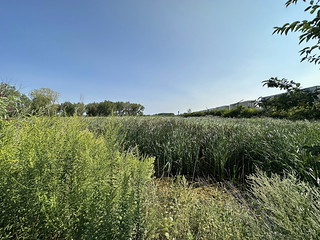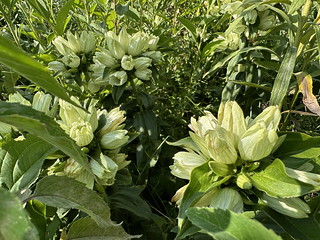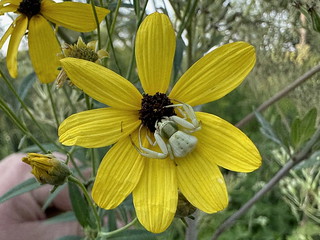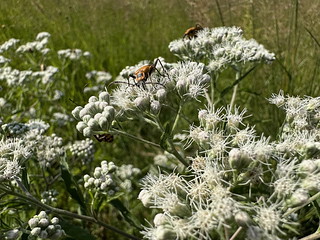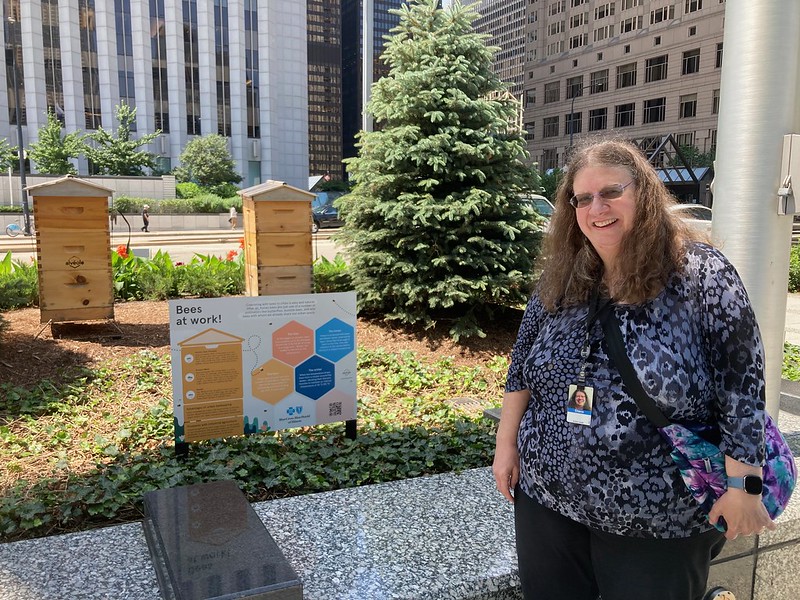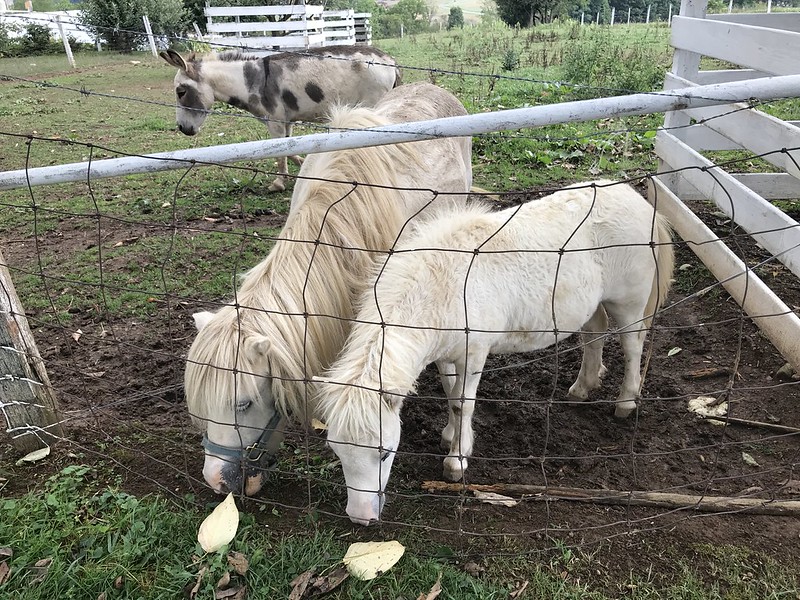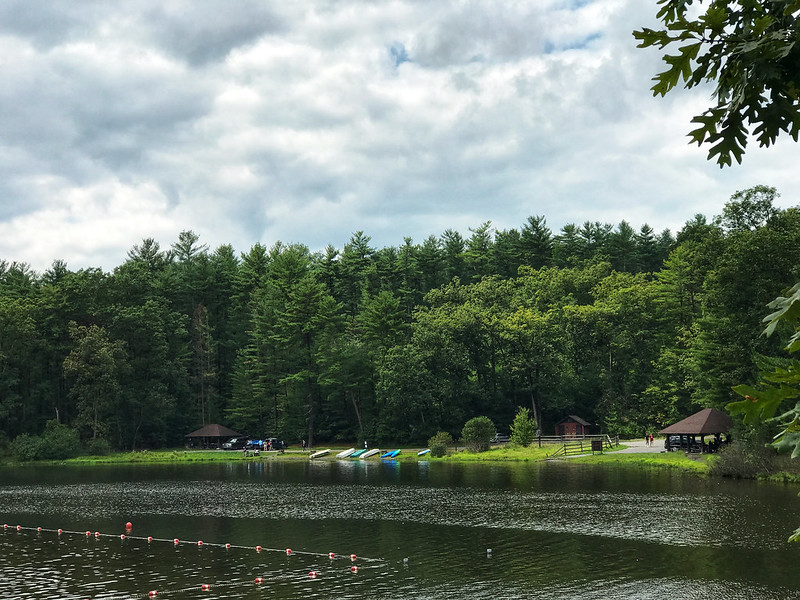October 6, 2024
I woke up early enough at Camp Bullfrog Lake to take a short walk. This may have been the first time I’ve seen a sunrise there. It was a beautiful one.
We decided to start another campfire, which left almost nothing solid behind. While we were behind the cabin, J spotted a mantis that looked a lot bigger and more solid than those I remember. It proved to be a Chinese mantis. When it felt my movement in the grass, it turned its head toward me. I wondered what it perceived.
Next, it was off to the art fair, where we were too late to sign up for a wagon ride. I didn’t see either of my favorite candle vendors, either. But the flowers, decorations, and festivities got me in the mood for fall, as did the Halloween theme at Ashbary Coffee House. We also visited Sagawau Environmental Learning Center, Maple Lake, and Ashbary Coffee House, where J picked up the food we ate at nearby Willow Springs Woods, observed by a few elusive deer.
I can’t remember how I found it online, but I spotted a “Sante Fe Prairie Nature Preserve” in Hodgkins, Illinois. Here’s how it’s described:
This 10.8 acre prairie is one of the rarest types of Illinois prairie, only two of its kind exist in the state. It was donated by the Burlington Northern Santa Fe Railroad in 1997 to the Civic Center Authority which now owns and manages this high quality prairie. More than 225 native plant species have been recorded at the site, many of which only survive in such prairie.
Hodgkins, a hub for United Parcel Service, is industrial (light industrial?), which made the drive surreal, especially with dusk coming on. We passed industry after industry, went over railroad tracks and under overpasses, and generally navigated a post-apocalyptic landscape.
At last we came to a road with the Des Plaines River on one side and a Sante Fe caboose on the other. The prairie is past the caboose. It was hard to see in the growing gloom set against the backdrop of light industry. It will be worth another visit in daylight, which may not feel so eerie.
Sign:
AN ILLINOIS NATURE PRESERVE
SANTA FE PRAIRIE
Santa Fe Prairie Nature Preserve has been formally dedicated as a sanctuary for native plants and animals. It is maintained in its natural condition so that present and future generations can see the Illinois landscape as it appeared in the past. This living example of our natural heritage is valuable for scientific studies and may provide habitat for rare plants and animals.
A high-quality feature of this preserve is the mesic gravel prairie, which is rated by The Nature Conservancy as globally rare and threatened throughout its range. Surrounding lands have been managed to support natural forest, prairie, and wetlands, all to the benefit of Santa Fe Prairie.
This preserve is owned by the Illinois & Michigan Canal National Heritage Corridor Civic Center Authority. Entrance is by permission only. Remain in the mowed areas. Domestic animals prohibited. Please protect and perpetuate the nature preserve by not disturbing or removing anything. All features are protected by law.
Illinois Nature Preserves Commission
More:
Santa Fe Prairie Nature Preserve contains high quality mesic and dry-mesic gravel prairie recognized by the Illinois Natural Areas Inventory. Gravel prairie is extremely rare in Illinois and the Midwest. Mesic gravel prairie dominated by prairie dropseed, big bluestem, and Indian grass makes up most of the site. There is also dry-mesic gravel prairie that is dominated by big bluestem, Indian grass, prairie dropseed, and porcupine grass. Prairie cord grass, blue joint grass, and multiple sedge species dominate the wet prairie. Characteristic species of the marsh community include bluejoint grass, narrow-leaved cattail, great bulrush, common arrowhead, and winged loosestrife. Approximately 225 native plant species have been recorded from the site.






























































































































